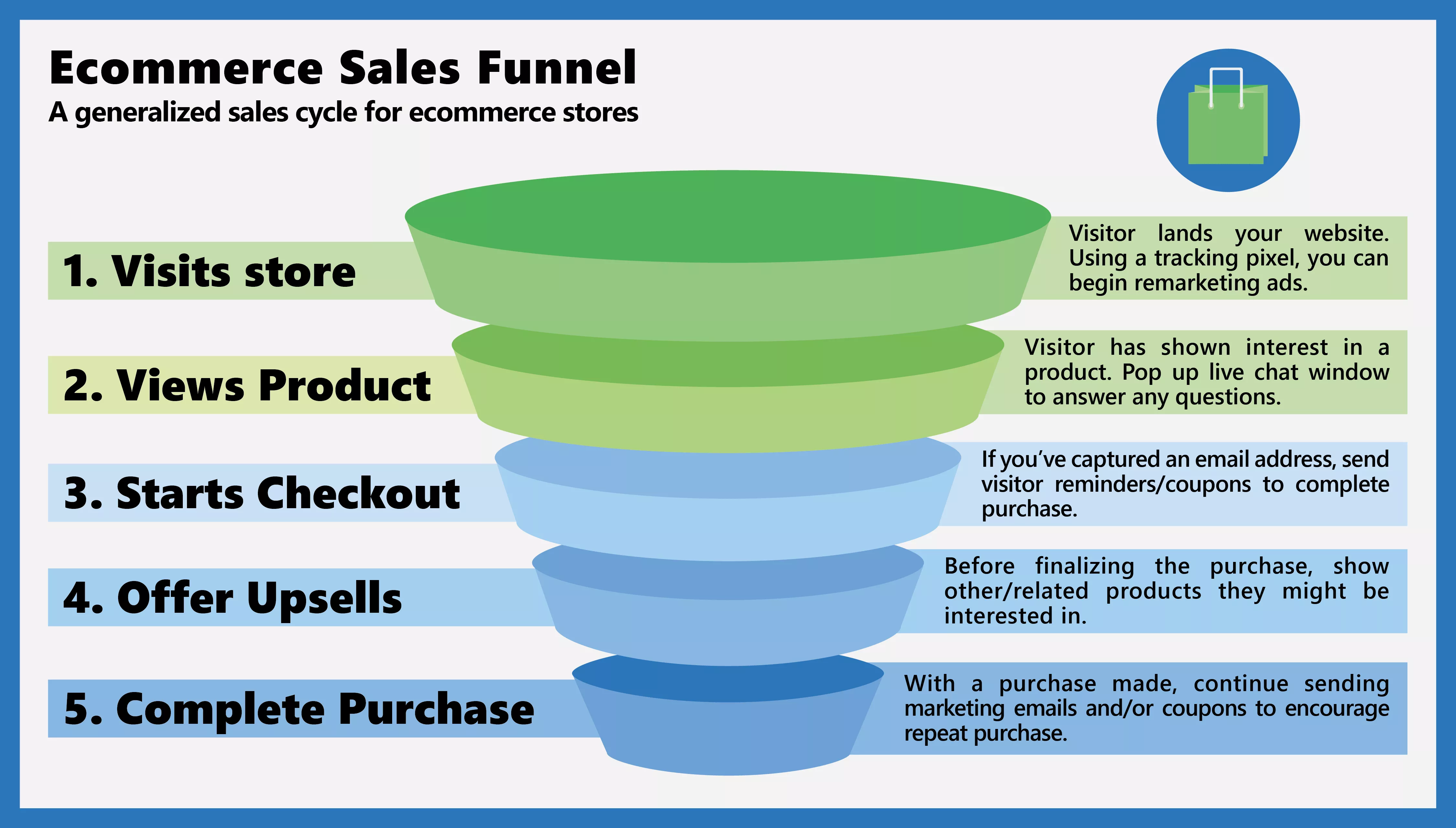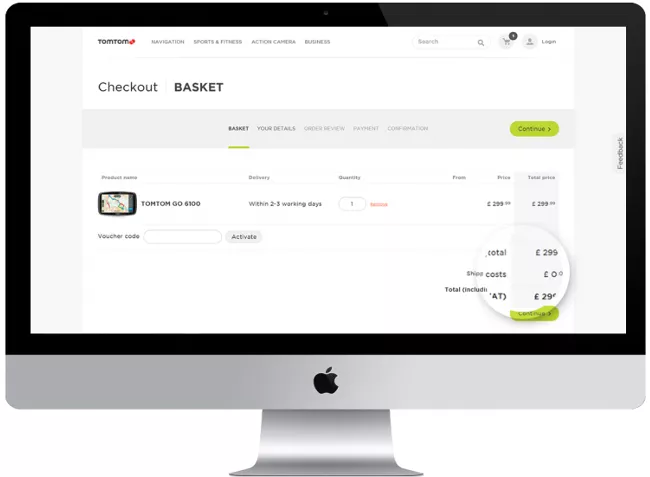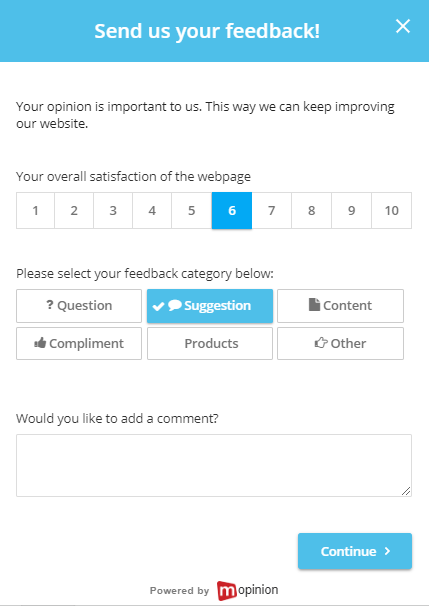4 Digital Feedback Metrics That Will Boost Your Sales Funnels

Kate, a digital marketer starts off every work day the same: she grabs a cup of coffee, switches on her laptop and logs into her online feedback dashboard. Here she reviews a report on all feedback collected from the previous day.
While sifting through the feedback data, Kate notices a significant rise in the number of low Customer Effort Scores (or CES) - the feedback metric that measures how much effort it takes your customer to achieve his / her goal.
Knowing this, she makes it her priority to investigate and determine the root cause of the low scores. She lines up the feedback items (that include low CES) with their accompanied open comments and is able to conclude these customers cannot complete the checkout due to a bug; a bug that is preventing them from filling in their billing information. So right away she reports the issue to her development department and it is resolved within minutes.
This is just one of the many examples in which feedback metrics can be used to identify these types of issues and subsequently, generate more sales.
The use of metrics is a practice businesses apply to nearly all aspects of their organization. Whether that’s finance, competition, customer requirements, expectations, employee performance, or marketing--metrics matter.
Metrics reflect and support the strategies of said aspects, giving us leverage to improve in any way we can. So why would this be any different when collecting digital customer feedback?
Without metrics, feedback data can be messy.
Receive a copy of the article to read later
Imagine having a long string of open comments. Not only will this kind of data be difficult to sort through and categorize, but it will also be difficult to measure performance and change over time...
Trends are far more useful than individual statistics and it is helpful to use metrics that can be reported over time. Working with metrics allows you to measure the effectiveness of your services and any improvements you make over time.
For example, does it take more or less effort for web visitors to buy from you than before?
It is also very helpful to be able to relate trends to specific parts of your sales funnel, as this helps to ensure your ‘fine tuning’ is getting the desired effects where it’s needed.
There are heaps of digital feedback metrics you can use within your feedback programme. However, some metrics are more suitable than others when you have a particular goal in mind. For the sake of this article, let’s focus on the following goal: improving sales funnels.
A Breakdown of the Sales Funnel
Sales--or ordering funnels--are extremely critical when it comes to collecting feedback from your customers.
Why? Because these are the moments in which if the customer experiences any difficulties in the ordering process, he or she may leave the website or mobile app and go elsewhere. A good example of this is shopping cart abandonment.
This is why it is vital to capture feedback in the moment (when the problem occurs), rather than via email after the interaction. However, it can be difficult to decide what to ask and when, which is why it’s important to have a structure in place to collect the feedback and for this to be kept consistent for every funnel or product.
It is also vital to remember each step in the funnel has a different goal as well as best way to collect feedback.

Stage 1: Beginning of the Funnel
Surprisingly for some, this process of collecting feedback starts at the very beginning of the funnel. Good product content and clear product information are what lure your customers into the sales funnel in the first place, and if that’s not up to par with their standards, you’ve already lost them.
Stage 2: Actual Purchase within the Funnel
But don’t stop there. Once they’ve gone through, selected a product or service and are ready for purchase, you need to stay sharp. Capturing ‘exit feedback’ from visitors who have failed to complete an order can serve up some valuable insights.
It can, for example, help you understand why your visitors do not proceed with their order and detect any barriers, such as technical issues or missing information.
Stage 3: Confirmation Page at the End of the Funnel
Congratulations! You have a new paying customer. But don’t stop here either…
Your customer has successfully made a purchase, but how was their experience? Was it smooth? Were there obstacles? How much effort was involved? Do they intend to buy from you again?
These are the kinds of insights you can obtain from feedback post-purchase.

Looking for tips on which part of your sales funnel you should start with? Check out this article.
With these stages in mind, let’s take a look at the 4 digital feedback metrics that will boost your sales funnels…
1. Goal Completion Rate (GCR)
Let’s start with one of the least ‘hyped,’ yet most valuable digital feedback metrics, Goal Completion Rate, or GCR. This metric measures the number of visitors who have completed, partly completed, or failed to complete a specific goal on your website (or mobile app).
It may sound negative, but knowing why your customers failed to reach their goals can be very advantageous, as it gives you the opportunity to rectify the situation on the spot, as well as make things right for future visitors who are likely to run into the same problems.

Where to collect GCR in your sales funnel
GCR, as you might’ve guessed, isn’t really useful when placed on the homepage or any pages too early in the funnel. The reason being is, at this point, you haven’t even given your visitor a chance to achieve their goals.
Instead, focus on parts of the website where the visitor is trying to complete an important action. The best example I can use here is making a purchase.

Example of GCR Feedback Form
Collection tip: GCR is not exactly the most actionable insight on its own. Take it one step further and ask some follow-up questions to get more detail into the matter.
2. Net Promoter Score (NPS)
Perhaps one of the most famous of metrics, especially as it pertains to loyalty and customer experience is Net Promoter Score, or NPS. NPS is the metric that indicates how likely your customers are to recommend your business to others (whether that’s friends, family, or colleagues).
This metric helps you divide your customer base into three groups: promoters (those loyal and likely to recommend you), detractors (those not-so-loyal customers who likely won’t advocate your brand), and passives (customers who fall somewhere in between).
Once again, although it might be a touchy subject and seem like you’re focusing too much on the negative, knowing who your detractors are will give you the upper hand.
Why? Because it immediately puts you in a position to turn those detractors into promoters, and therefore ‘upping’ your loyal customer base.

Where to collect NPS in your sales funnel
Similar to GCR, NPS is not recommended for early-in-the-funnel use. This metric is explicitly for customers who have built up some sort of relationship with your brand. Therefore, it is ideal to use NPS in feedback forms located towards the end of the funnel and with customers who are familiar with your business.

Example of NPS Feedback Form
“Different teams and different executives can have heated debates about your product….Who’s right? Net Promoter Score is. It’s the voice of the customer. If you have a high NPS score, you’re doing something right here, no matter the feature gaps or other issues. If it’s low, take action, my friends. Stop being so proud of yourself. Your customers aren’t.”-Jason Lemkin, Venture Capitalist and founder of SaaStr
Collection tip: there are two types of NPS surveys, relationship and transactional. Relationship NPS surveys focus on obtaining general insights into how the customer sees the business, whereas Transactional NPS surveys focus on obtaining insights based on a particular transaction.
3. Customer Effort Score (CES)
Customer Effort Score, or CES is another powerful metric used by many digital marketers in feedback programmes. This metric measures how much effort it takes your customer to achieve his / her goal.

Why use CES? The saying goes that ‘High effort results in lower customer loyalty.’
In short, if your customers are forced to expend more effort trying to achieve their goal than they expected, they’re much more likely to leave your website. This means you’ll want your online journey and sales funnels to be as simple and clear-cut as possible.
Where to collect CES in your sales funnel
There are a number of different places and triggers you can apply for collecting CES in your sales funnel. It doesn’t necessarily have to be at the end of a funnel. You can easily pick and choose processes or pre-defined goals that you want to take a closer look at in your sales funnel.
So for example, you can measure CES when your customers are seeking customer support or additional information. This is done using a slide-in or modal feedback form that will appear when your customer reaches the goal.

And of course, you can ask for feedback towards the end of the funnel. For example, after a purchase.
Why? Because even though your customer has successfully purchased an item or service, it doesn’t mean they’re satisfied with the steps they needed to take to get to that point. In other words, you may end up losing customers due to a difficult purchasing process.
All in all, this is a great metric in that it helps lower frustration levels, ensuring a smooth online journey.
4. Customer Satisfaction (CSAT)
Lastly, we have Customer Satisfaction, or CSAT. Also a very well-known metric, CSAT is ideal for measuring how satisfied your customers are with your brand or even a particular webpage.

What’s great about this metric is that it can be used on just about any page of your website. In fact, CSAT makes it very easy to measure how your website meets customer expectations, while simultaneously discovering issues and hurdles in sales funnels.
"For every customer complaint there are 26 other unhappy customers who have remained silent, so make sure you test your customer journey and ask for customer feedback."-Fonolo blog
Where to apply CSAT in your sales funnel
As previously mentioned, CSAT can be used just about anywhere on your website. In other words, all stages of the sales funnel are suitable.
In fact, it can be very beneficial to provide a feedback button on each page, should your visitors want to submit feedback at a moment’s notice.

Example of CSAT Feedback Form
Collection Tip: when using a Likert scale, start with a statement such as ‘I am very satisfied with this webpage.’ Then you can offer various answer options ranging from ‘strongly disagree’ to ‘strongly agree.’
Start boosting your online sales
All of the metrics listed above have one thing in common: these metrics are actionable.
You can use all four--GCR, NPS, CES, and CSAT--to measure and make any necessary changes within the sales funnel of your website or mobile app, whether those are design changes, fixing bugs, clarifying product content, and more.
Also keep in mind that timing and relevance, when using these metrics, is of the essence!
Ready to start boosting your sales?
Want more sales? Download my 11-Point Perfect Sales Funnel Checklist or invest in our Sales Funnel Blueprint.
About the author: Erin Gilliam, Content Marketer at Mopinion. Erin has a background in international businesses and digital marketing. Mopinion is an all-in-one user feedback software that helps digital teams make sense out of customer feedback from websites and mobile apps and turn it into real-time insights. Mopinion is now one of the fastest growing companies in the digital customer experience space.













